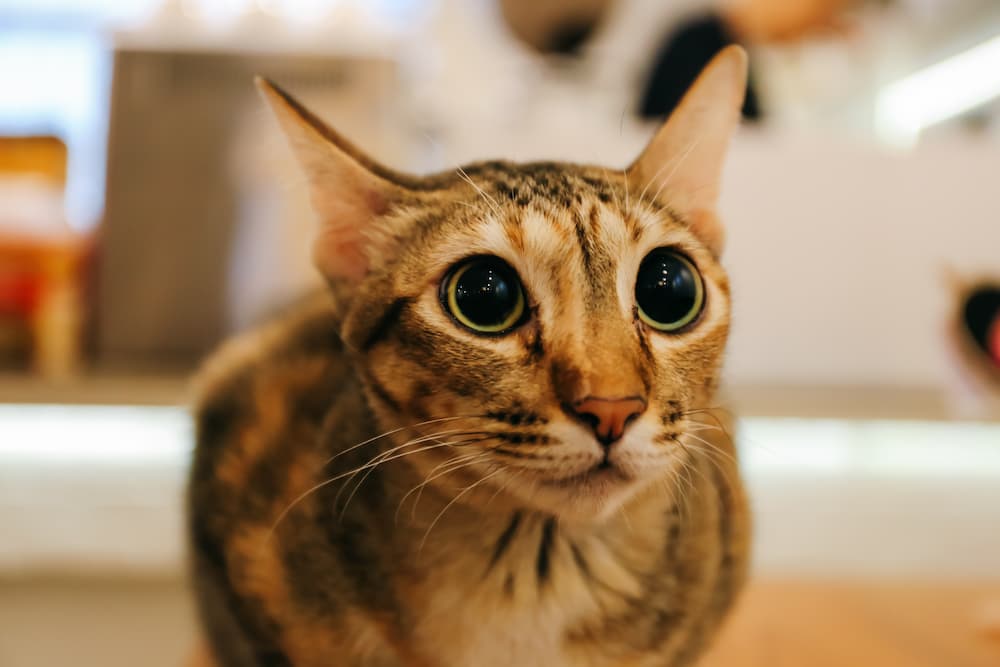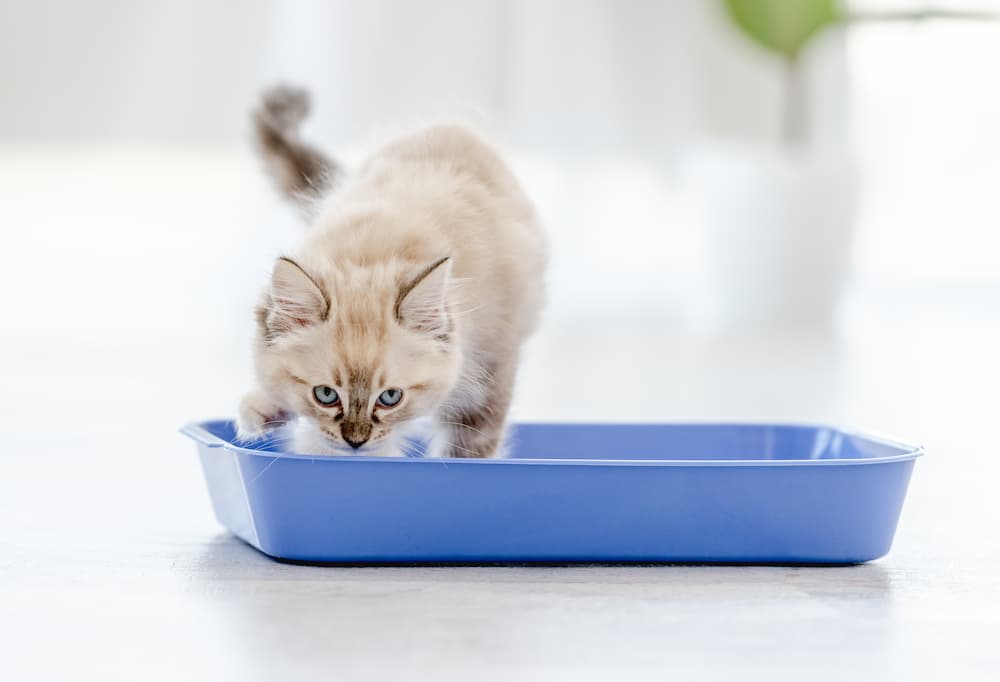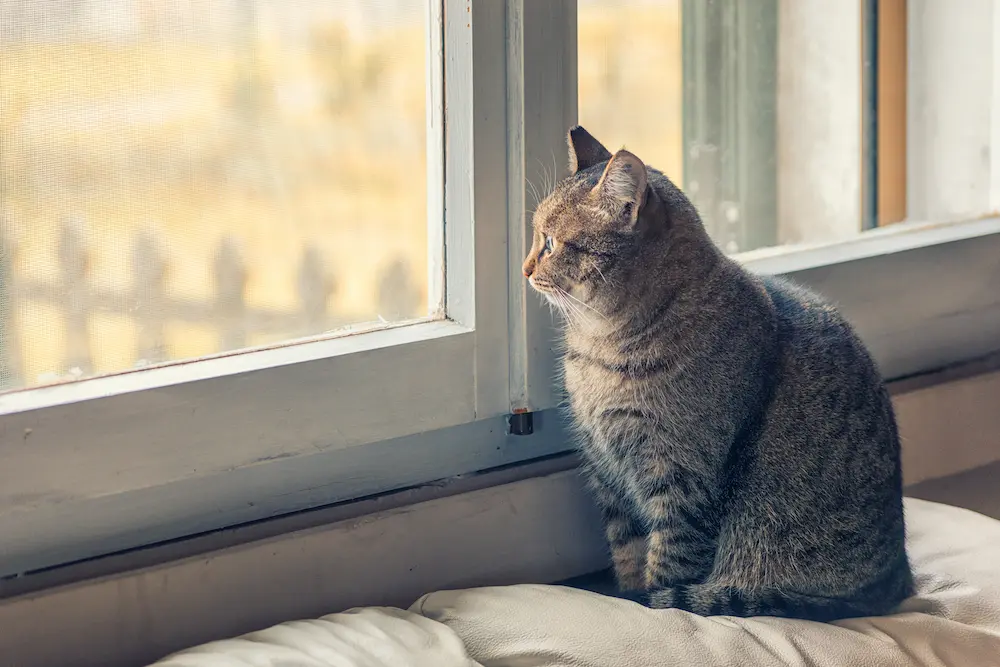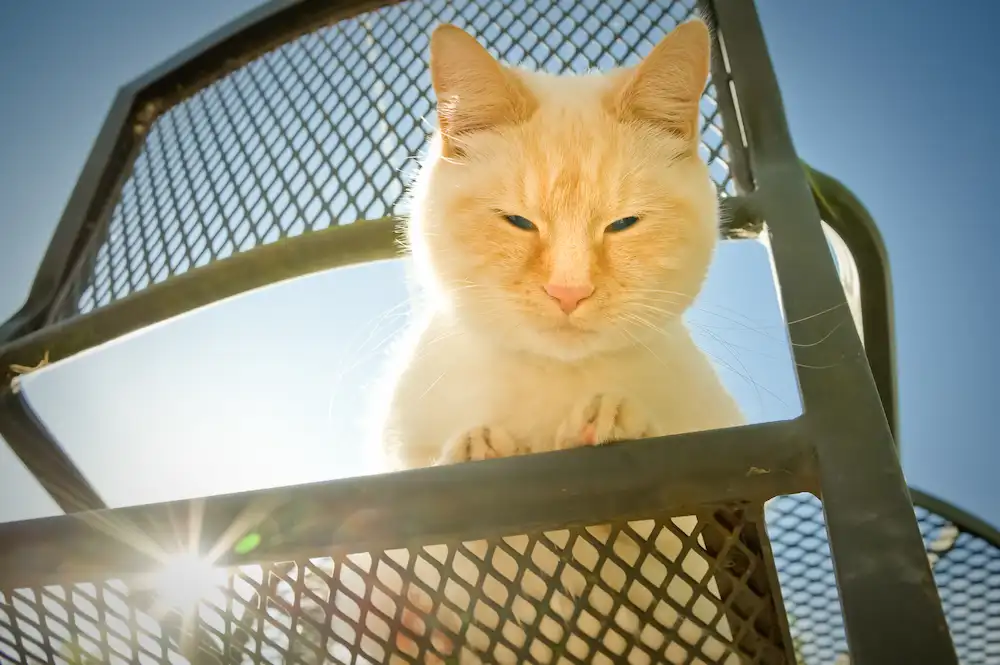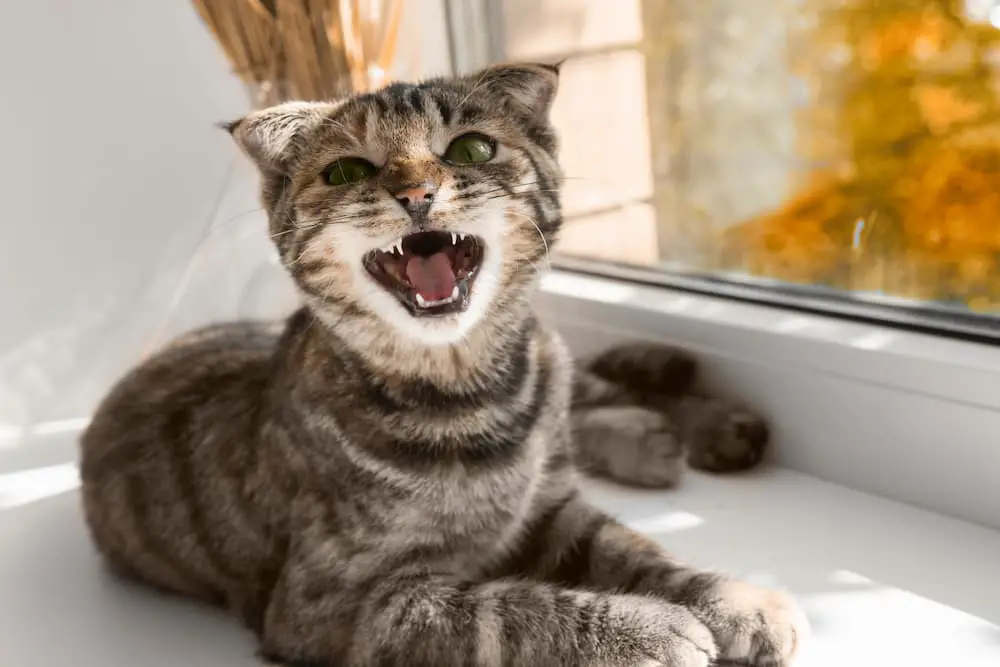As the leaves turn golden and the air gets a tad nippy, we humans break out our pumpkin spice lattes and cozy sweaters. But what about our feline friends? How do you keep your cat warm and cozy this season? While they may not be PSL enthusiasts (though some do have a strange fascination with cardboard coffee cup sleeves), they too can feel the change in the weather. It’s important to make sure our purr-fect pals are comfy and cozy as we transition into fall.
Just because they’re covered head-to-toe in fur doesn’t mean they’re immune to the chill. In fact, cats can catch a cold just like us, which is why keeping them snug as a bug during the cooler months is absolutely crucial. Also, not all cats are created equal. Some are like furry little snow leopards, loving the cooler weather, while others would trade all their treats for a sunny spot near a window.
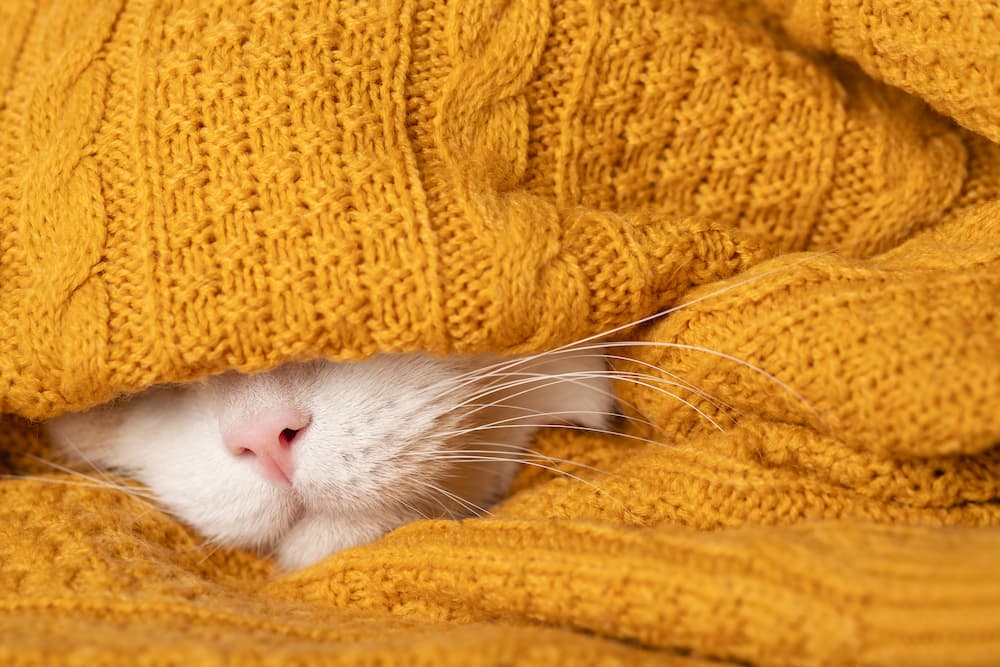
So, how do you make sure your kitty is warm and comfy this fall? Don’t worry, we’ve got you covered. This article will guide you through some easy and fun ways to keep your cat purring happily all season long. From creating a cozy nest to stimulating indoor play, we’ll help you turn your home into a cat-friendly fall haven.
Understanding Your Cat’s Needs in Fall
First off, let’s talk about how cats perceive temperature changes. You see, cats are absolute geniuses when it comes to seeking warmth. They’re basically tiny, purring heat-seeking missiles! While cats do have a higher body temperature than us and thus prefer warmer climates, they do feel the cold, especially when the fall chill sets in.
Now, you might be wondering, “My cat is so fluffy. Why is she more sensitive to cold?” Well, just like us humans, some kitties are more sensitive to colder weather than others. It’s all about their fur type, age, health, and even their lifestyle. Indoor cats, for instance, are more accustomed to a constant, warm indoor temperature and may find the sudden change more discomforting.
Spotting an uncomfortable or cold kitty is not a game of hide and seek. There are common signs you can look out for. Is Mittens spending an inordinate amount of time near the radiator? Is she curling up into a tight, tiny fur ball? Or maybe she’s just not her usual playful self? These can all be signs that your feline friend is feeling the fall chill and it’s time to step up your cat comfort game.
Providing a Warm Shelter
Let’s start by making your indoor environment cozy for your feline buddy. Adjusting the thermostat to maintain a consistent warm temperature inside your house is a good starting point. Remember, while you might be comfortable in a slightly chilly room, your cat might not feel the same way. So, maybe turn that thermostat up a couple of notches.
Next, think about where your cat loves to sleep. Is it on the couch? Your bed? Their own bed? No matter their chosen snoozing spot, consider adding some extra soft bedding and blankets to these areas. Cats love to burrow and nest into soft materials – it’s their own version of a warm hug!
If you’re in search of something that’d make your kitty purr in delight, a heated cat bed might just be the magic trick. These beds come with built-in heaters that maintain the purr-fect temperature for your cat to snuggle into. Not only are they cozy, but they also provide therapeutic warmth for older cats or those with arthritis. Remember, even though Fluffy might love that heating pad you use for your sore muscles, it’s not a safe option for our four-legged friends. Human heating pads can get too hot for our fur-babies and may cause burns. So stick to products specifically designed for cats to ensure they’re safe and snug.
Keeping Outdoor Cats Warm
But what about our adventurous outdoor kitties? Well, they need some love too. If you have a cat who loves to spend time outdoors, you can prepare an outdoor shelter for them. You can use a simple, insulated enclosure to provide warmth. A heated pad or a heated water bowl can be a great addition to this setup. These will not only keep your outdoor cat warm but also provide them with unfrozen water to drink. Remember to place the shelter away from wind and rain, and in a spot that gets some sun.
Dressing Your Cat for Cooler Weather

There are some cases where clothing is more of a necessity than a cute accessory. If your cat is elderly, has a medical condition that affects their ability to regulate body temperature, or is hairless, they’ll likely benefit from a little extra warmth. Of course, dressing your cat in a tiny sweater may sound like an impossible task, but it doesn’t have to be! There are many options for cat clothing available that are specifically designed for our feline friends. From simple sweaters to adorable hoodies, you’re sure to find something that’ll keep your cat warm and make them look even more adorable.
Proper Nutrition for Cold Weather
As the weather turns colder, your cat’s metabolism might also undergo changes. They tend to expend more energy to keep warm, which may result in an increased appetite. This is nature’s way of ensuring they have enough fuel to maintain a stable body temperature. However, it’s essential to monitor their food intake and maintain a balanced diet. Overfeeding can lead to obesity, which has its own set of health implications.
A balanced diet is crucial during the cold months. Ensure their food is rich in high-quality proteins and fats to provide the necessary energy. This is particularly important for outdoor cats who spend a lot of time outside and are exposed to the cold. Also, always have fresh water available. Cats may not drink as much in cooler weather, but hydration is as important as ever.
In terms of feeding tips for fall, consider slightly warming your cat’s wet food before serving. Not only does this enhance the aroma, making it more appealing, but it can also provide some extra warmth from within. Always check the temperature of the food before serving to ensure it’s not too hot.
Encouraging Exercise and Play
Just as we humans crank up our gym routine when it’s chilly, our feline friends can also benefit from a bit more physical activity during colder months. Extra playtime not only keeps them mentally stimulated but can also generate body heat to keep them warm. Play chase with a laser pointer, roll a ping pong ball, or simply toss a bunch of crumpled paper – there’s no limit to the fun you can have indoors!
You can also make every day feel like Caturday with some interactive toys. Puzzle feeders are a great way for them to exercise their brains and bodies at the same time. Or consider a multi-level cat tree if you have the space, as it combines climbing, scratching, and lounging all in one. This is especially useful for indoor/outdoor cats who might be missing their tree-climbing adventures outside.
Regardless of the type of play, the goal is to keep your fur baby active, engaged, and warm. Remember, a bored cat is not only a chilly cat, but also one that might start showing negative behaviors. So let’s keep those paws moving, those minds thinking, and those bodies warm this fall!
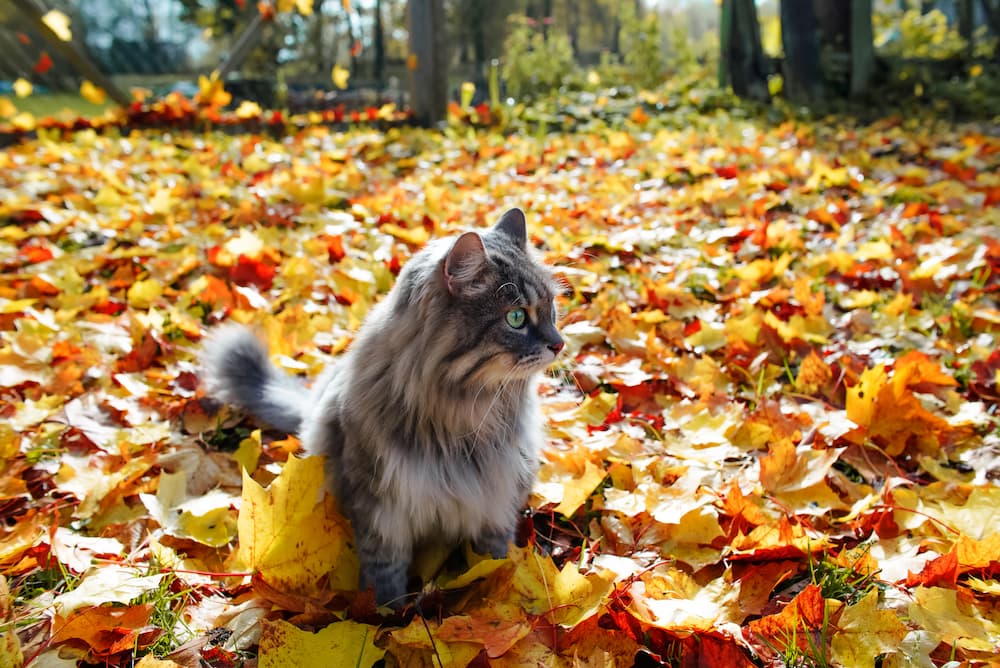
Grooming and Coat Care
Let’s talk fur, or rather, your cat’s coat. Did you know that a well-groomed cat is a warm cat? That’s right! Regular grooming helps to fluff up your cat’s coat, allowing it to trap more air and thus provide better insulation. Brushing not only removes loose hair but also stimulates blood circulation, which is a natural warming mechanism. Plus, it gives you both some quality bonding time!
Now, onto brush selection. Aim for a brush that’s gentle on your cat’s skin but effective in untangling and eliminating dead hair. Short-haired cats would appreciate a fine-toothed comb or a rubber grooming mitt like these from HandsOn, while a slicker brush works wonders on long-haired beauties. Regular brushing sessions – think once or twice a week for short-haired cats, and daily for long-haired felines – can keep your kitty’s coat in tip-top condition.
Lastly, we can’t stress enough the importance of keeping your cat dry during this season. Wet fur is a poor insulator and can make your cat feel colder. Additionally, cold, damp conditions can lead to health issues such as hypothermia or skin problems. So if your outdoor adventurer returns home a little damp, be sure to towel them off. And of course, keep a vigilant eye on the weather forecast to avoid letting your cat out in the rain or snow.
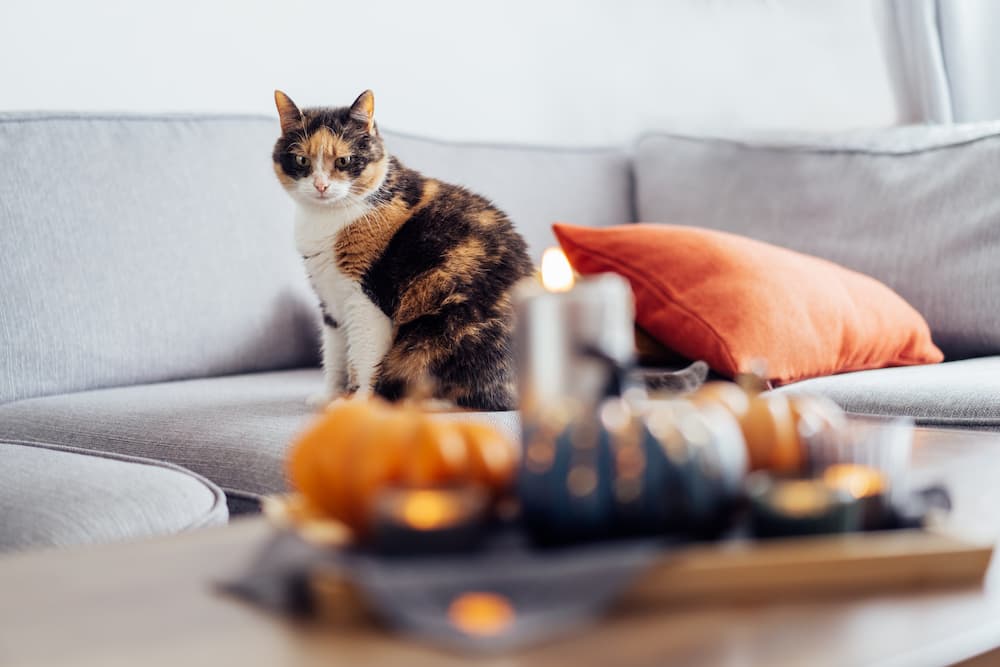
Safety Precautions: Fall Hazards and How to Avoid Them
As the temperatures drop, our feline friends might find warm and cozy spots to snuggle into. Some of these spots, though, can be potential hazards. Open flames, for instance, from a fireplace or a candle, are very enticing for a chilly kitty. However, they also pose a risk of burns or causing a fire. It’s crucial to always supervise your cat around open flames and consider using fireplace screens or battery-operated candles to keep your furry friend safe.
Additionally, cats are known for their uncanny ability to find the warmest spots in the house. This could include under the blankets, behind the computer, or even under the hood of your car. Before you bundle up in your blanket or start your car engine, remember to check these spots for a hidden napping cat to prevent accidental injuries.
Lastly, if your kitty spends time outdoors, it’s important to monitor them during the fall. Although cats generally have good instincts and tend to seek shelter when the weather gets harsh, sometimes they may not make it back home before a storm or sudden temperature drop. Make it a habit to call your cat inside during the early evening and keep them indoors overnight. The fall season can be just as fun as it is safe for your cat with these precautions in place!
Monitoring Your Cat’s Comfort
Your kitty is a master at hiding discomfort, but there are subtle signs you can watch for to gauge their comfort level. If your cat seems to be seeking out cool places in the house, panting, or has a decreased appetite, they might be too warm. On the flip side, if they’re huddling in warm spots, seem lethargic, or their ears and paws feel cool to the touch, they could be chilly. Remember, each cat is unique and may exhibit different signs. The key is knowing your cat’s normal behavior and looking out for any changes.
Regular vet check-ups are important, particularly during seasonal changes. Your vet can provide advice tailored to your cat’s age, breed, health condition, and lifestyle. These check-ups are also an opportunity to catch any potential health issues early. Don’t forget to ask your vet about protective vaccines or treatments, especially for outdoor cats who are more exposed to pests and diseases during the fall.
You can adjust your cat’s environment to their comfort level. If they’re feeling cold, consider adding some cozy blankets to their favorite spots or investing in a heated cat bed. For cats that are too warm, ensure there are plenty of cool, shaded areas in the home, and consider turning on a fan or the air conditioning. However, always make sure your cat has the freedom to move to a different area if they wish to – after all, they’re the kings and queens of their castle!
The Catington Post is reader-supported. That means, if you make a purchase through links on our site, we may earn an affiliate commission. All images and names which are not the property of The Catington Post are the property of their respective owners.
